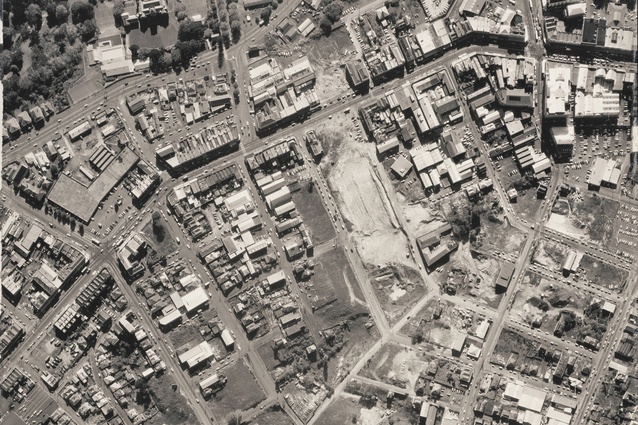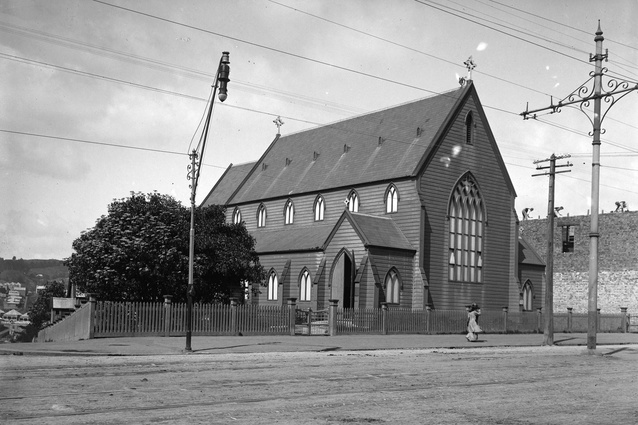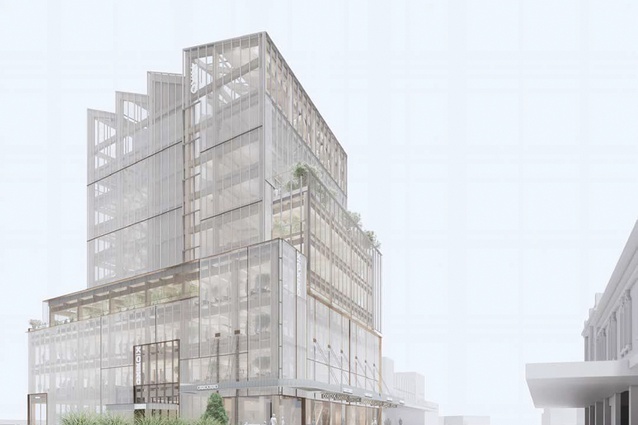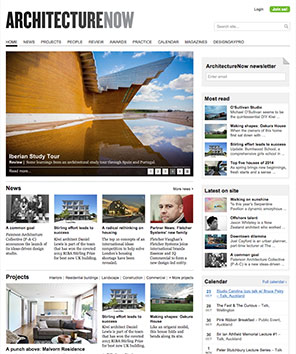An epiphany at 538 Karangahape Road
Anthony Vile advocates for critical public discourse when it comes to matters relating to the RMA and urban intensification.
In late March, a proposal for a commercial development on a high-profile site in Auckland central was generating some emotional reactions across the motu, as reflected on my social media feed. “Insanity” is how Resource Management Act (RMA) Reform Minister Chris Bishop termed Auckland Council independent hearing commissioners’ rejection of plans for a new $100-million office building near the $5.5 billion-plus publicly funded City Rail Link (CRL). Wow, I thought, what were they proposing, a nuclear plant?
Digging deeper turned up some facts that were missing from the public discourse. If we are serious about building a world-class city, we need critical public discourse. The city becomes a concrete manifestation of that discourse. Without it, we are destined to repeat old patterns.
538 K’ Road: The facts1
2021: Consent granted for a six-level building (approx. 5200m2), adding three levels atop an existing mixed-use structure.
2023: New consent sought for a 10–11-level commercial building, including retail, F&B, offices and 48 basement car parks.
The site sits in the Auckland City Centre Zone, within the Karangahape Road Precinct and the Karangahape Road Historic Heritage Area, so extra layers of policy apply. The application was deemed non-complying for two key reasons:
1. Floor area ratio (FAR): Proposed FAR was 6.55:1 — more than double the allowed 3:1
2. Height: Proposed height exceeded the limit by more than 27m on K’ Road, and 35m on Abbey Street. Maximum height in the Auckland Unitary Plan (AUP) is 15m.
This triggered a review under Section 104D of the RMA, where non-complying activities may proceed only if effects on the environment are no more than minor, or the activity is not contrary to plan objectives and policies.
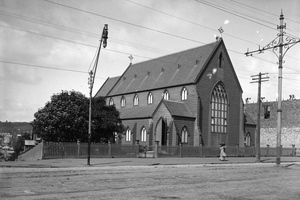
The key resource management matters requiring assessment relate to the additional height and floor area proposed for the building and the associated effects from the built form and scale of the development on the distinctive character of the area, on historic heritage values and on adjacent public streets and sites.
The principal issues in contention are:
- building height, bulk, massing and materiality
- compatibility with the Karangahape Road Historic Heritage Area (HHA) and Karangahape Road Precinct.
The Government’s National Policy Statement on Urban Development (NPS-UD) 2022 directs Auckland Council to enable more building height and housing density within and around Auckland’s city centre, metropolitan centres and rapid transit stops.
Plan Change 78 (PC 78) remained in process at the time with the proposed amendments to the City Centre Zone rules, including the removal of the floor area ratio standard and 35m general height standard on the K’ Road ridge, having no legal effect.
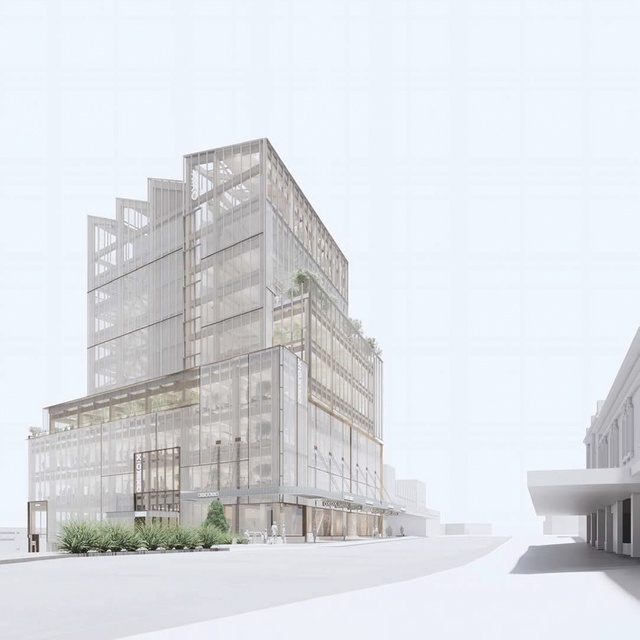
As non-complying consent, the applicant decided to have the Resource Consent (RC) publicly notified. They also lodged a submission on PC 78 Central Zone asking for removal of the Karangahape Road Precinct overlay from their site.
There were 32 public submissions against the project with a high proportion from local residents. Submitters had the opportunity to present their cases to the Independent Hearings Panel. Democracy in action.
“While the site could accommodate increased height, the design, scale and bulk must be consistent with the relevant provisions of the Karangahape Road Precinct and the Karangahape Road HHA.” Jeremy Brabant Barrister was speaking for Samson Corp with regard to its submission.
“… the introduction of an overbearing mass along the Karangahape Road frontage was the heart of the issue” — Chris Butler, urban designer for Council.
Reading of the RC hearing decision report highlights the experience and talent of the teams involved. It also highlights the depth of discourse that occurs and the critical issues that need more public airing.2
The developer, understandably, wanted to maximise the development potential for the site, its consultants using expertise to deliver the end goal of a speculative investment that will deliver profit. Our council also performed its role working with the frameworks and legislation in place at the time to manage an outcome that would address the developer’s idea of feasibility, the architect’s idea of beauty and the engineer’s idea of efficiency.
The proposal was taken through a process; it was reviewed by council experts, including the Urban Design Panel and, ultimately, rejected.
Insanity is the wrong word; it’s an outcome of a rigorous legal and civic process. It is assumed all parties understand the risks associated with any particular consenting strategy and, at the end of the day, you give it your best shot.
The outcome of this process perhaps demonstrates that it was the wrong scheme at the wrong time in the wrong place.
Commissioners’ decision
On consideration, the Auckland Council’s independent hearing commissioners declined the application. The commissioners found that the proposal failed to meet the tests under the RMA and was contrary to the objectives and policies of the Auckland Unitary Plan. The principal concern was the scale of the development, which was considered to have more than minor adverse effects on the environment and the heritage values of the area.
“We find that the proposal is likely to have effects particularly on character and amenity that are more than minor. In terms of the height and massing, the proposal in its current form fails to avoid the adverse dominance and amenity effects on Karangahape Road and Gundry Street.”
End of story? Not quite. The decision by the Independent Hearings Panel on PC 78 City Centre Zone has now been confirmed.3 The City Centre Zone, including Karangahape Road, has been endorsed to enable more liberal development to occur: unlimited building heights in the core city centre; up to 72.5m in other areas, except where special height controls or qualifying matters apply.
FAR standards have been removed to provide developers with more flexibility in building design, within other constraints like tower dimensions and setback controls.
For K’ Road, the proposed height limit has been confirmed at 35m, with further constraint managing development through qualifying matters and further council discretion. The heritage area remains intact but the removal of 538 K’ Road and the whole western block from Gundry Road to Newton Road from the Karangahape Road Precinct has also been confirmed.4
This decision, in essence, lessens the focus of the site on context and heritage. The block removed also contains the pub which, coincidentally, is named The Dog’s Bollix. Let’s hope this decision doesn’t enable a development that, in 100 years, calls out to its people as such.
For me, this story is really an opportunity to highlight issues about which we, the public, designers and developers, need to continue having a healthy discourse.
What is heritage when it applies to a place, not just a building?
Precinct-level protection values the ensemble: buildings, spaces, relationships and the intangible history they hold. It’s about the whole place, not just parts. It requires a dynamic view across space and time.
When communities value a place, culturally or socially, what responsibility do developers carry to respect that story?
We should incentivise positive outcomes, where design innovation and heritage coexist.
Could we adopt precinct-level planning around CRL stations — establishing bulk, height and land-use expectations in advance?
This would give developers certainty, communities a voice and councils a baseline for quality.
Why can demolition precede consent for replacement buildings?
In a city centre, vacant lots and Wilson car parks are an anti-urban strategy. Shouldn’t we offer short-term leases or pop-ups instead of hoardings and revenue-generation car-storage yards?
In the race to intensify, how do we maintain balance?
Commercial vs residential, short-term yield vs long-term value, private gain vs public good — this is the realm of urban design. Maximising yield isn’t the brief for a mature city. The tensions between competing outcomes are where design magic happens.
The need to maximise intensification still needs to be measured against outcomes and public good. Our heritage and cultural stories are too precious to ignore for the primacy of individual property rights.
References
2 “If it is part of the walls of public life, you are in public service.” Thomas Heatherwick on the the responsibility of designing in urban space, see here.
4 The Panel, following its site visit, is not satisfied that the “distinctive built form and streetscape character” of the Karangahape Road Precinct extends to the block in question and we do not consider that the block aligns well with the precinct description especially when considering the requirements of the NPS-UD Policy 3(a) (maximising intensification).

